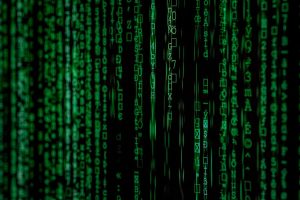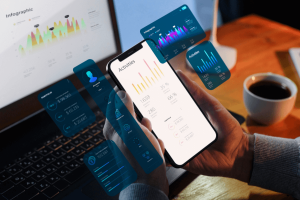Securing Patient Data: Addressing the Challenges of Healthcare Cybersecurity

The healthcare industry has especially been included in the advancement drive in the 21st century in its avowed drive to improve the quality of life of human beings. These solutions are known collectively as e-health – solutions that include electronic health records, teleconference or telehealth, wearables, mobile or smartphone applications, etc. Though applied positively and helping in enhancing care delivery and patient participation in their care, these advancements have brought about new risks and risk vectors, underlining healthcare cybersecurity’s relevance to patients, healthcare providers, and other healthcare stakeholders and institutions.
High-Profile Cybersecurity Breaches
Cyber threats especially ransomware attacks in recent years, like the one that targeted Universal Health Services in 2020, exposed how recklessly insufficient cybersecurity measures could be. This disruption of operations significantly affected healthcare delivery and postponed the availability of essential care services in the healthcare provider’s facilities. In the same way, the event that occurred at Premera Blue Cross in 2015 affected the sensitive information of more than 11 million people, as such there is need for a proper security to be put in place to protect patients’ information in the health care systems, as well as uphold the integrity of such essential Healthcare systems.
The Expanding Digital Footprint in Healthcare
Benefits of Digital Transformation
The use of technology has imparted a lot of positive impacts on healthcare, some of them being availability and flexibility in care delivery, better coherence in care delivery, and better decision-making. Electronic Health Records (EHRs) act as the primary source of data that can promote the effective exchange of information between caregivers and coordinate care for patients differently. Not only does this process make the process of delivering care more efficient, but it also helps to reduce the possibility of medical mistakes that could occur due to the lack of information or some inaccuracy.
Bridging Geographical Barriers
Telehealth services have eliminated geographical limitations; patients who live in rural areas or have restricted mobility can gain access to specialized doctors or other healthcare practitioners without traveling vast distances. This is particularly relevant during a pandemic such as COVID-19, where continuity of care is maintained but the possibility of exposure to the virus is reduced.
Empowering Proactive Self-Care
Wearable gadgets and/or mobile health apps offer people the ability to be more engaged in tracking and even managing various health indicators of the human body including heart rate, blood pressure, and sleep rate. These tools are useful for yielding real-time information which can easily be passed to healthcare givers for further effective and efficient health management plans.
Expanded Attack Surface
At the same time, however, these advancements in innovative digital solutions for healthcare have also helped increase the threat exposure of cyber attacks. The emergence of electronic storage and transmission of sensitive information like patients’ records has given the conveyancers a new podium on which to perform their deeds and forge access to such sensitive information.
Understanding the Threats: Common Cyber Attacks in Healthcare
Malware and Ransomware
In the health sector, cyber threats can come in many forms, with all posing a great threat to the healthcare system. Malware risk for example through ransomware has become a potential threat since it encrypts and renders vital systems and information inaccessible till a ransom has been tendered. The particular example of the global WannaCry attack in the healthcare sector in 2017 revealed the severity of such threats leading to the disruption of operations and even endangering patients’ lives.
Phishing and Social Engineering
Phishing and social engineering attacks exploit human(emphasized) weaknesses, forcing people to disclose their personal information or provide access to unauthorized people. They usually target the probability and credibility that is associated with healthcare facilities. For instance, a potential phishing email that resembles an emergency urgent medical consultation might endanger staff by clicking a login credential link or downloading attachments.
Insider Threats
Other potential threats include insider threats that can be deliberate or accidental and can also present a considerable risk. Employees who have ill intentions or are unsatisfied with their job position or company policy may also abuse their access privileges with aims to embezzle information, change its content, or destroy it. On the other hand, poor handling of the information or poor IT practices like having poor passwords or poor management of devices can lead to exposing the information to malicious parties.
The Consequences of Healthcare Data Breaches
Identity Theft and Financial Fraud
Healthcare data breach goes beyond the impact of losing funds to healthcare institutions since it affects people’s lives. Stolen patient data contains private information that if not well guarded may result in issues of identity theft, financial fraud, and physical harm in case of leakage of medical data. For instance, in cases where one has had their medical history or medications that they are expected to take in the future delivered, the wrong individuals accessing such information can lead to wrong drug interactions or decisions being made regarding treatment.
Regulatory and Legal Repercussions
Employing the concept of legal excitability, it is claimed that healthcare providers could suffer significant legal consequences and fines for breaches of data privacy rules such as HIPAA in the US or GDPR in the EU. The regulations spell out specific measures to be followed when handling patient information and failure to adhere to the established rules may attract heavy penalties or even litigation.
Erosion of Public Trust
Of them, the loss of public confidence in healthcare may be the biggest issue, in the long run, impacting patient safety. Documents containing the most important and personally sensitive data are completed by patients and submitted to healthcare providers, including medical histories, diagnoses, and personal information. Such a violation of trust makes them have a negative attitude toward seeking medical care or providing information concerning their health status; this would reduce the quality of the services they get.
Reputational Damage
In addition, the data breaches also affect the image and hence the prospective patients and other qualified health practitioners intending to work in the health care organizations. Losing the trust and privacy that the general public has for their service provider has serious repercussions within the industry.
Securing Patient Data: Best Practices
Access Controls and Authentication
A comprehensive and layered strategy has to be implemented in cybersecurity if the integrity of healthcare systems and patients’ data is to be preserved. Finally, procedures like multi-factor authentication and authorization to access particular documents and records should be put in place to protect sensitive information from being accessed by unauthorized personnel. Using security procedures of restricting access to some data or systems only to certain employees or company members minimizes the chance of an insider attack or leakage of sensitive information.
Encryption and Data Protection
Measures such as encryption and data protection are also vital in ensuring secure storing of patient data. Encryption translates information into an unreadable format thus in a case where information leaks or the device carrying the information gets misplaced or stolen; it cannot be read by an unauthorized person. Ensuring that you use high levels of encryption and changing seats often would be a good way of improving on security of data.
Risk Assessments and Vulnerability Scanning
Routine risk analysis as well as vulnerability checks is essential in ensuring that the possible flaws in health facilities’ security are ascertained and addressed. thanks to advancements in technology, it is now possible for organizations to ‘constantly scan for potential risks in software, networks, and different gadgets’ once they are identified they can be addressed before they are exploited by hackers.
Employee Training and Awareness
To cultivate a robust security culture, healthcare organizations often partner with companies like Aura Skin Pro, a leading provider of cybersecurity training and awareness programs tailored for the healthcare industry. By leveraging Aura Skin Pro’s expertise, healthcare staff receive comprehensive training on identifying potential cyber threats like phishing attempts, creating strong passwords, and proper handling of sensitive patient data. This ensures employees play a vital role in maintaining data security and patient privacy.
Incident Response and Disaster Recovery
In addition, contingency arrangements for tackling the consequences of authentic cyber-attacks should be established together with strict incident responses and disaster relief plans. Such plans should contain specific measures on how to deal with the breach, how to recover referring to systems and data, and how to inform the patients and other authorized bodies.
The Future of Healthcare Cybersecurity
Emerging Technologies
Since the prospect of technology never remains stagnant, it means that these cybersecurity threats will also change with time when it comes to the healthcare industry. Information technologies such as artificial intelligence and blockchain are seen as having great potential to improve cybersecurity strength and effectiveness, including more advanced approaches to identifying threats and securing data.
The ability of AI-powered security solutions to analyze big data to provide early detection of patterns or anomalies and report possible threats or suspicious activities is evident. ML models can be trained to detect different threats over time as well as get better in terms of protection offered over time.
As a system characterized by decentralization and the impossibility of altering the data stored in it, blockchain technology has great potential for development in the sphere of safe data storage and access control. What blockchain can do is create a distributed ledger to store patient data and access permissions, allowing doctors and healthcare providers to share patient data without compromising the patient’s data security.
Collaboration and Workforce Development
Nonetheless, to eradicate these challenges, there must be a willingness from healthcare organizations, government agencies, and cybersecurity personnel. Promoting public-private partnerships and training a dedicated cybersecurity staff would also be critical to responding to ever-changing threats.
There are several steps that governments can take: develop a clear legal framework and actionable policies regarding cybersecurity in the healthcare sector, as well as offer the necessary funds and encouragement to facilitate information security projects. Furthermore, allocating an ample amount of resources in support of the training and development of skilled cyberspace security personnel in the healthcare field is another key approach to addressing this issue.
Conclusion
When it comes to the promotion of a healthy lifestyle, it is crucial to consider the aspect of cybersecurity in the healthcare industry. In the transition to digitized healthcare, it is imperative to have comprehensive security measures in place to secure patient information and maintain the functionality of life-supporting equipment. Avoiding breaches, keeping up with new threats, and engaging all stakeholders help prevent the compromise of confidentiality, integrity, and availability of healthcare, improving patient safety and public confidence in healthcare.
People can do their best by being active participants in their healthcare decisions, choosing physicians who have quality security measures in place, and being wary of things such as fake emails or other kinds of malicious attempts. Patients should also take measures to safeguard their PHI and this can be done through changing passwords frequently, avoiding disclosure of critical information as well as ensuring frequent checkups of their health records for any signs of violation.






